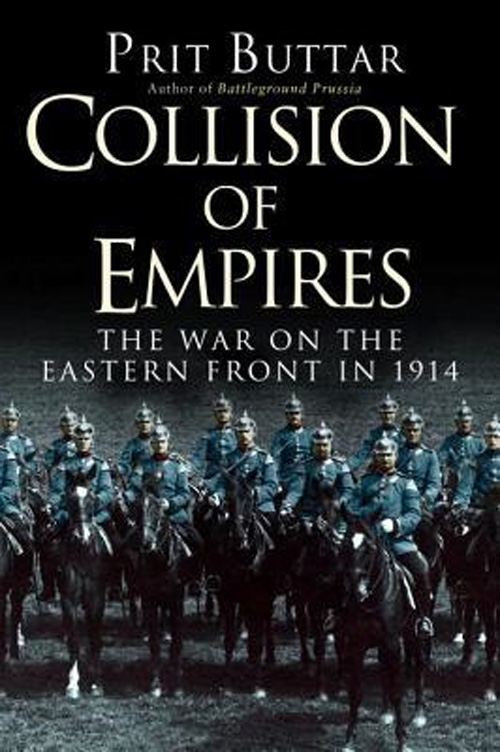The War on the Eastern Front in 1914
Review

Collision of Empires: The War on the Eastern Front in 1914, Prit Buttar, Osprey Publishing, 2014, 472p, £20-00. ISBN 978-1-78200-648-0.
In introducing his research and narrative, Prit Buttar makes the point that there is a tendency to consider the Great War from the perspective of what happened on the borders of France and Belgium in the impasse created by trench warfare. He guides the reader, quite properly, into recognising that there was effectively another parallel conflict on the Eastern Front, involving three empires, two of which were imperceptibly tottering towards collapse and where possibly the death toll was even greater than in the West.
Anyone interested in the Eastern theatre of the Great War will find this book captivating because Buttar examines in meticulous detail exactly how the campaign evolved in the first five months of the conflict, with the nature of the fighting more comparable with earlier campaigns, with armies moving at speed into various manoeuvres, with desolated Poland in the midst of the conflict, and with the railway being a new factor in rapid troop deployment.
However for those unfamiliar with the Eastern conflict, the introductory and concluding chapters are very strongly recommended. In the former he examines and debates the mood and philosophy of the various army leaderships in the period from 1870 until the catastrophic events at Sarajevo. There was always in the East an emphasis on attack rather than defence, something that had been learned by the Prussians in the Franco-Prussian War. There was possibly an exaggerated sense of the influence of France: her desire for revenge over the loss of Alsace and Lorraine was strongly recognised and this led to the Germans tending to regard any campaign in the East as being focussed on maintaining an equilibrium whilst matters in the West were resolved. Of course in the midst of this mistaken priority Hindenburg and Ludendorff emerged as outstanding figures, with the former becoming an icon in post-war Germany. The concluding chapter - ‘Disappointment and Illusion' - is a very accessible and realistic consideration of what had been achieved in those five months, with a very helpful analysis of the manner in which various tactics had been pursued and applied.
This book has much to offer both the specialist and also the reader with a general interest in wider perspectives of the Great War.

